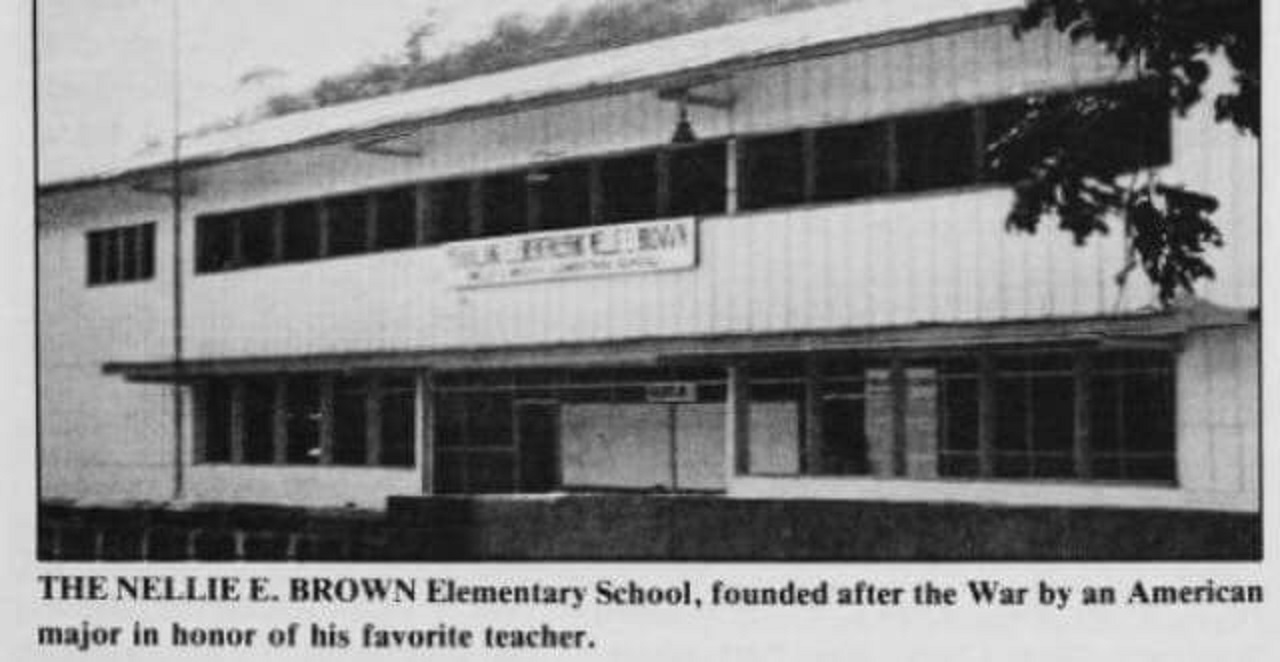
——————————————-
Olongapo is an important place, I know it since 1962. The US Navy and Olongapo were ONE ENTITY for decades. It has become my home. It was, it is, important in my life. Hence it needs its own albums!
——————————————-
A friend asked me about an Olongapo school name, so I started researching, this section is the result. Practically all the information and pictures came from a most outstanding Facebook page. TAG GAPO KA BA?: click here:
Question from a friend: I’m asking about the name of a school in Subic: the Nellie E. Brown Elementary School. Specifically, who is the school was named after. Would you happen to know this person? Any information will be helpful?
I asked and TAGA GAPO KA BA sent this and encouraged me to share!

Zg401. Nellie E. Brown Elementary School, West Bajac Bajac, from Facebook page TAGA GAPO KA BA
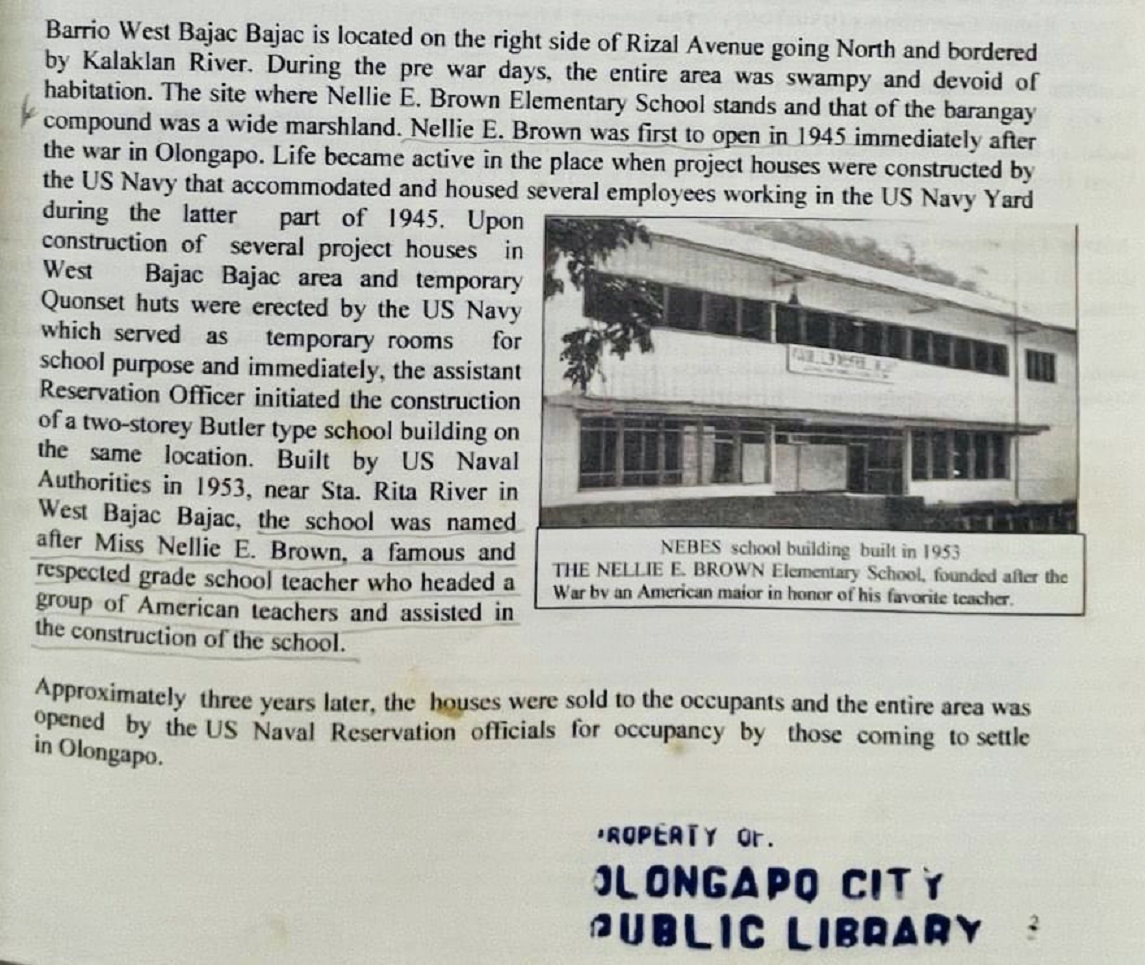
Zg402. Nellie E. Brown Elementary School, West Bajac Bajac, from Facebook page TAGA GAPO KA BA
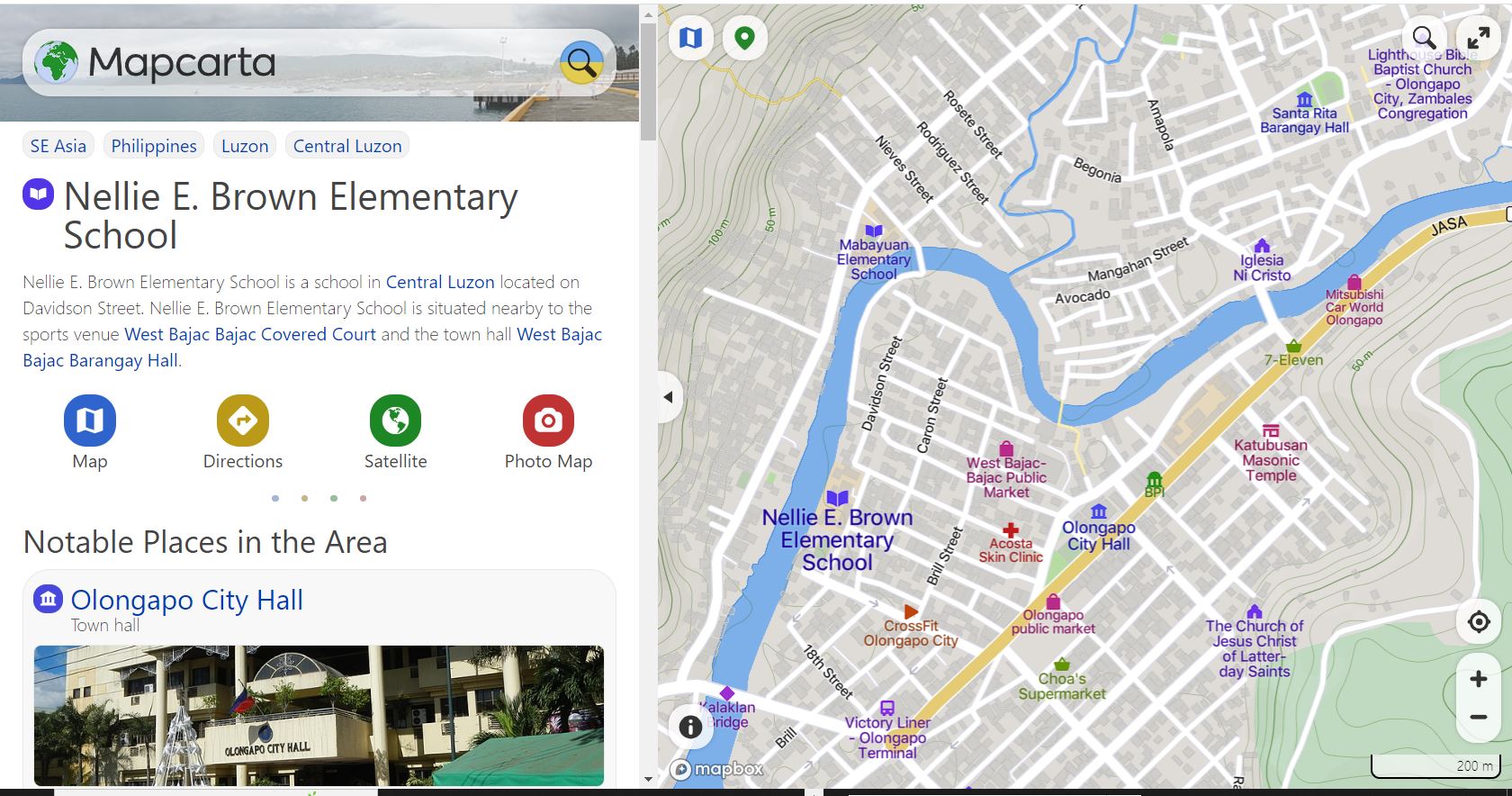
Zg403. Nellie E. Brown Elementary School, West Bajac Bajac, from Wikipedia Map.
I tried to find Miss Nellie E. Brown in the www with only negative results. I speculate she was perhaps one of the Thomasites Teachers. Or perhaps she was another important person in the education field before or during the war.
I also question the term that an American major founded the school after the war. It is true that the US Army liberated Olongapo, having a very difficult time to break thru the Japanese lines in the Battle of Zig-Zag Pass. But did the author mean perhaps the Naval Commander of the Naval Reservation, which got reestablished and who acted as “Mayor” of Olongapo?
—————
Question No 2: Who was J.K. Jackson, which is what I liked to know ever since 1962, the day I arrived in Subic Bay, was a Petty Officer 3rd Class (BM3) and had shore patrol? On my first day in the Philippines, on extra shore Patrol duty from my ship, part of my beat was in front of the Jackson High School. In the last 60 years is asked on and off who was Jackson; nobody seemed to know.
I finally asked the Facebook page TAGA GAPO KA BA and it sent this article and these pics:
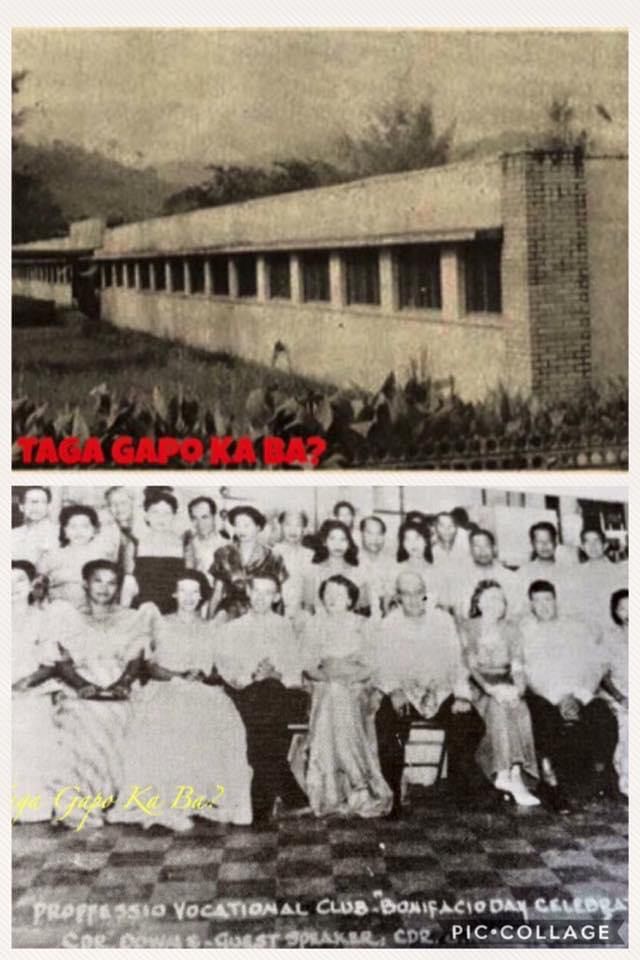
Zg405. Olongapo J.K Jackson High School, from Facebook page TAGA GAPO KA BA
DID YOU KNOW WHY OCNHS is called Jackson High School? In 1952-1957, Cmdr. J.K. Jackson, an Assistant Reservation Officer and Commanding Officer of the US Naval Base Public Works Department (PWC) painstakingly engineered and supervised the construction of the 14-classroom building of concrete and red bricks, steel pallet doors and windows and tar covered roofing’s. The whole high school compound was fenced with concrete and steel matting’s. The gates fronting Rizal Avenue (Manila Avenue) and 14th Street are of steel matting’s and expanded metals, showing the robust and sturdiness of the school. Unofficially, because of this great rehabilitation, the school was known as the Jackson High in honor of Cmdr. J.K. Jackson. It was never formalized as Jackson High. The unofficial name lasted up to these days though. Photo: top: JK Jackson Building in 1960 Bottom: My only photo of Commander JK Jackson, 4th from right, during the Bonifacio Day November 30, 1952 gathering of the Olongapo Proffessio-Vocational Club.
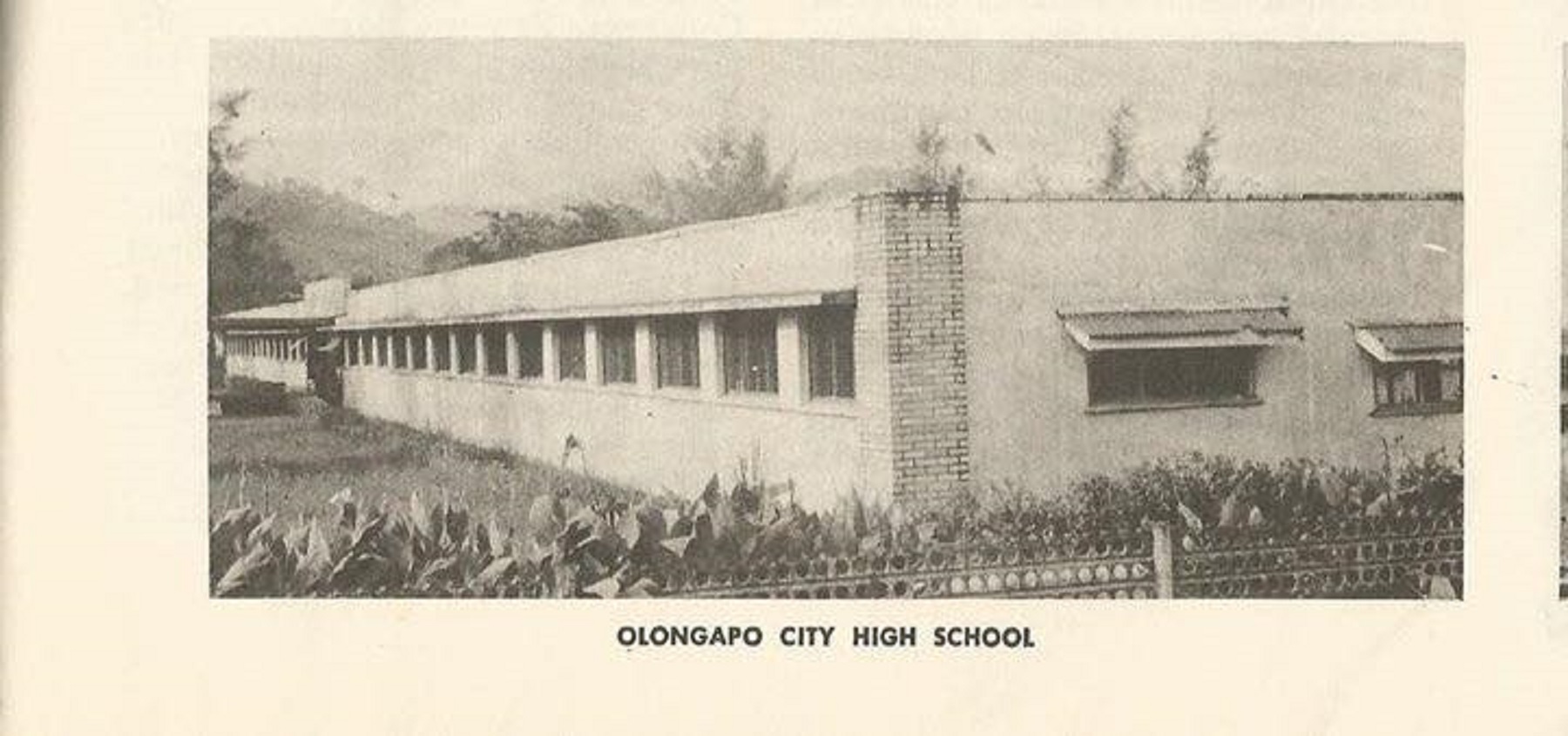
Zg406. Olongapo J.K Jackson High School, from Facebook page TAGA GAPO KA BA
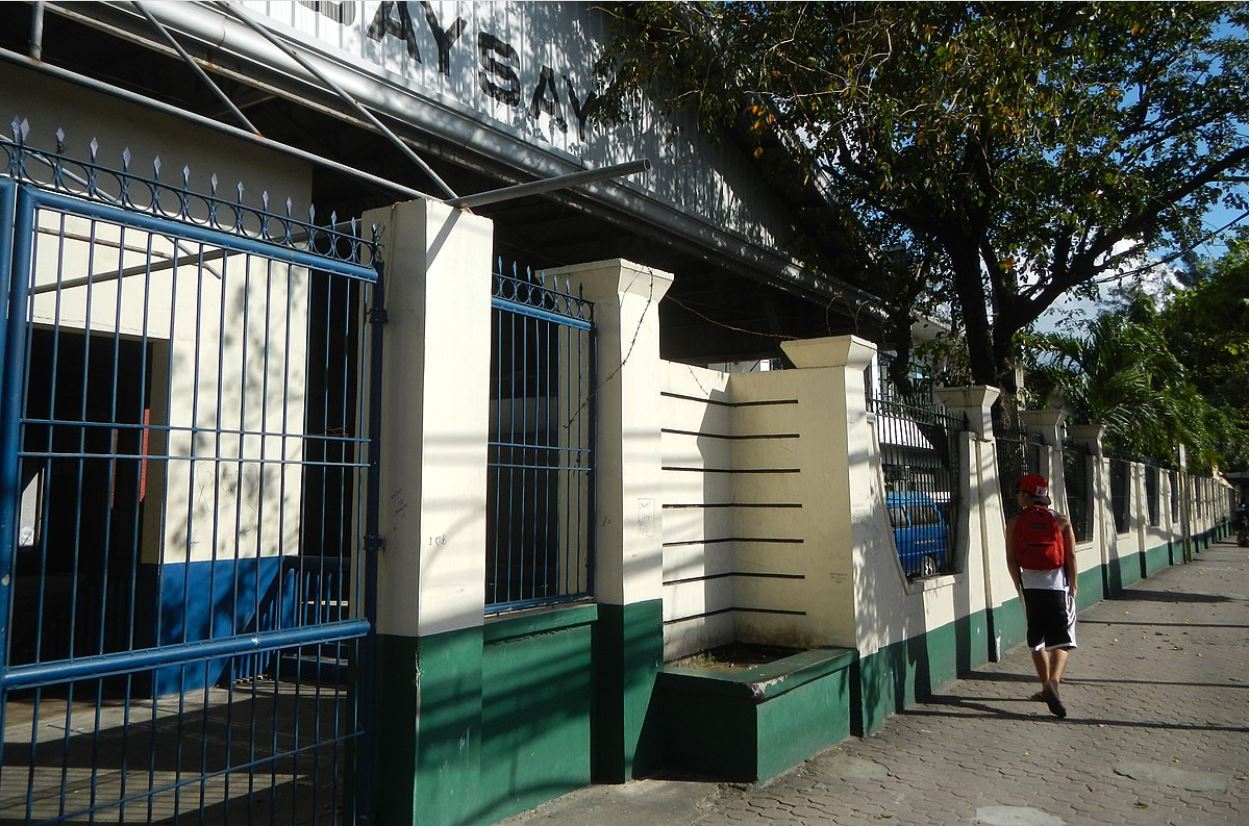
Zg407. Olongapo City NHS, ex J.K Jackson High School, from Wikimedia, the main side towards Rizal Ave, formerly Manila Ave.
On my first day in the Philippines, on extra Shore Patrol duty from my ship, part of my beat was in front of the Jackson High School. In the last 60 years is asked on and off who was Jackson; nobody seemed to know. In 1962 the sidewalk and the road was gravel then and we were in our white uniforms, cleaning them was about 30 cents and we had pier service. The Jeepney to the main gate from the pier or boat landing was 5 centavos then.
——————————————-
An Olongapo Harbor, Subic Bay under Japanese occupation image and under attack in Dec. 1944.

Zg445. An Olongapo Harbor, Subic Bay under Japanese occupation image, shot in Dec. 1944 for Navy reconnaissance. It shows the Oryoku Maru under attack. It was provided by John Duresky in his research work for Philippine MIA research and recovery project on Facebook.
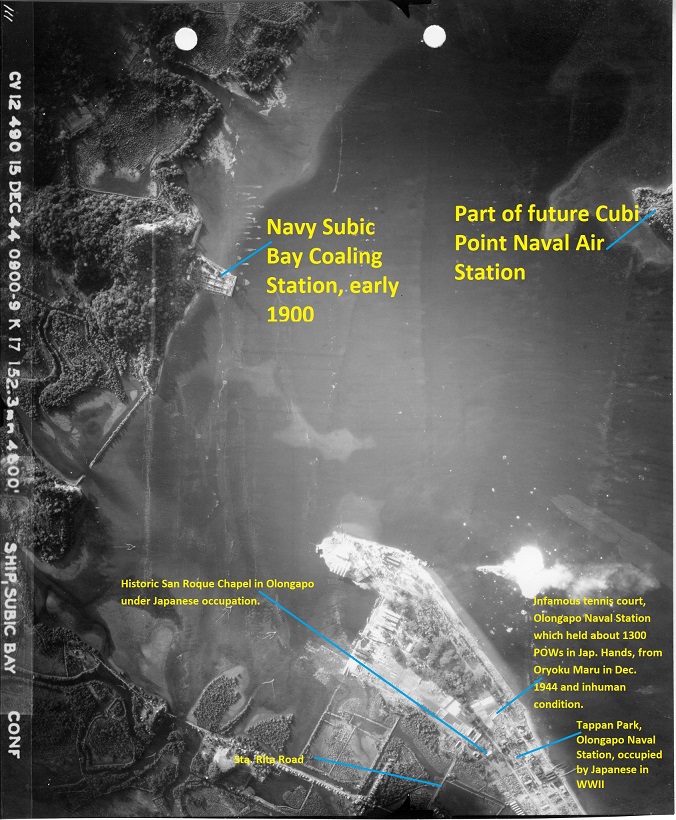
Zg446. An Olongapo Harbor, Subic Bay under Japanese occupation image, shot in Dec. 1944 for Navy reconnaissance. It shows the Oryoku Maru under attack. It was provided by John Duresky in his research work for Philippine MIA research and recovery project on Facebook. This copy is marked-up for your orientation!
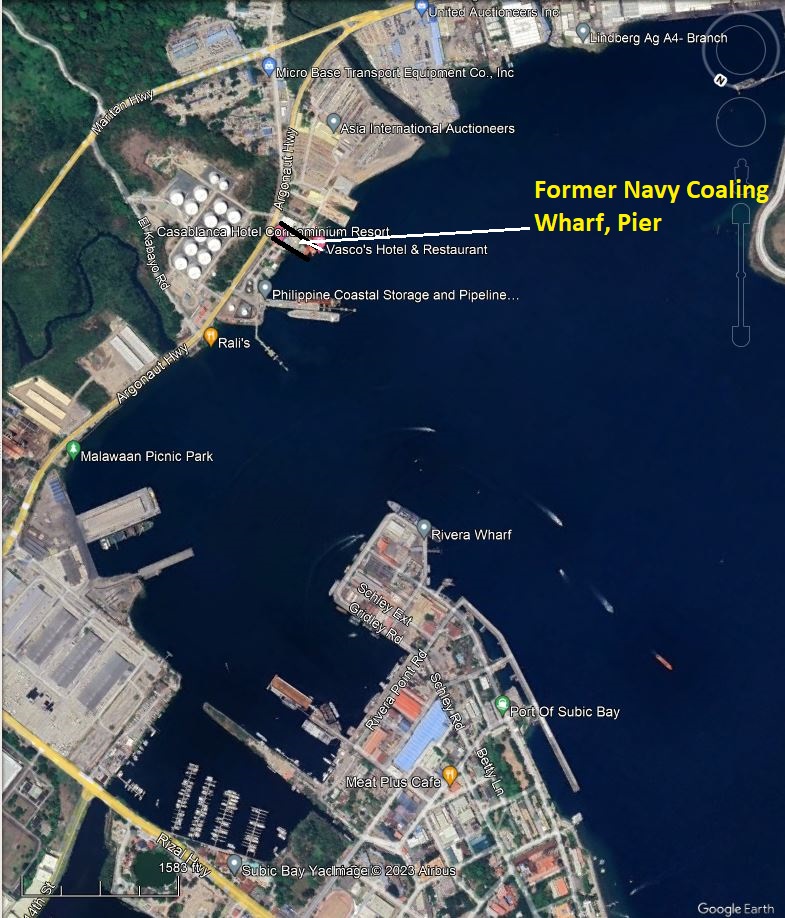
Zg447. SBFZ, Subic Bay 2023 image from. Google Earth for comparison to the 2 previous images.
These images can be downloaded in high resolution in this Flickr album: High Resolution album #3,
Album URL, click here:
Image Zg445. (#1) URL, click here:
Image Zg446. (#1a) URL, click here: